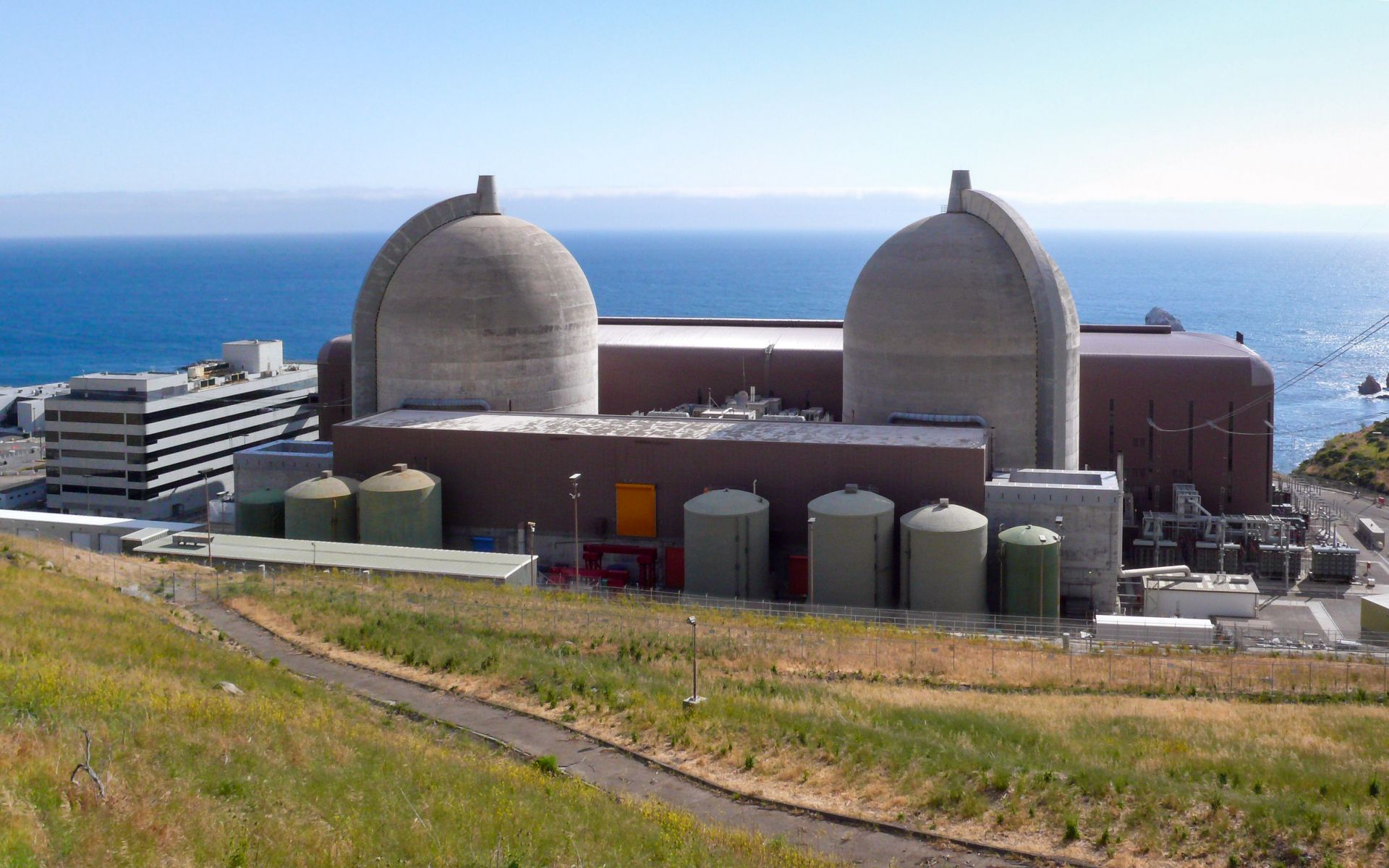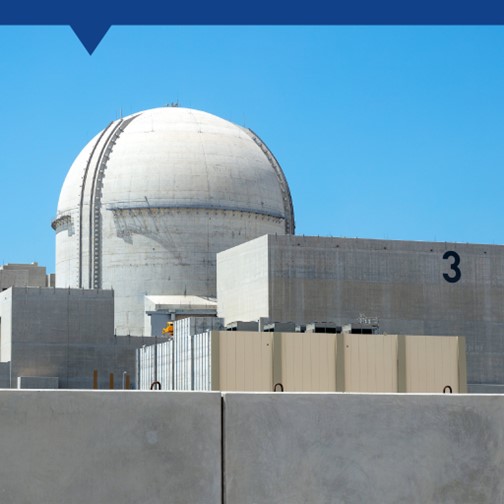Proposed revision to GEIS for license renewal published; input sought
The Nuclear Regulatory Commission has published a proposed rule that would update its generic environmental impact statement for license renewal of nuclear plants (LR GEIS).

A message from Westinghouse Electric Company Parts Business
Westinghouse delivers advanced, plug-in-ready power supply solutions that eliminate obsolescence and keep nuclear plants running safely, reliably, and future-ready.
The Nuclear Regulatory Commission has published a proposed rule that would update its generic environmental impact statement for license renewal of nuclear plants (LR GEIS).

Unit 3 at the Vogtle nuclear power plant has achieved initial criticality, Georgia Power announced yesterday. A key milestone on the way to the reactor’s commercial operation, initial criticality demonstrates that operators have safely started, for the first time, the nuclear reaction inside the unit. (Fuel loading at Vogtle-3 began last October.)

The Nuclear Regulatory Commission has granted Pacific Gas & Electric a “timely renewal” exemption so the Diablo Canyon nuclear power plant can continue operating while its license renewal application is under review, it was announced yesterday. This new decision clears a major regulatory hurdle to extending the operating license of the Units 1 and 2 beyond their original closure dates of 2024 and 2025, respectively.

Walker
A bipartisan effort in the Illinois General Assembly to repeal the state’s decades-old prohibition on new nuclear plant construction made some progress this week when the House Public Utilities Committee voted 18–3 to advance a bill lifting the ban.
Introduced on January 12 by Rep. Mark Walker (D., 53rd Dist.)—who sponsored identical legislation last year—H.B. 1079 would delete language in the Illinois Public Utilities Act that prohibits nuclear plant construction in the state “until the director of the Illinois Environmental Protection Agency finds that the United States government, through its authorized agency, has identified and approved a demonstrable technology or means for the disposal of high-level nuclear waste, or until such construction has been specifically approved by a statute enacted by the General Assembly.” The bill has 31 cosponsors—four Democrats and 27 Republicans.

Westinghouse Electric Company has filed a notice of intent to submit key licensing reports for its eVinci microreactor to the Nuclear Regulatory Commission and Canadian Nuclear Safety Commission for joint review, the firm announced last week. (The two nuclear regulators signed a memorandum of cooperation in August 2019 to increase collaboration on the technical reviews of advanced reactor and small modular reactor technologies.)
.jpg)
Three up, one to go: The third of four Korean-designed APR-1400 reactors at the United Arab Emirates’ Barakah nuclear power plant has begun commercial operation, Emirates Nuclear Energy Corporation (ENEC) announced on February 24.

State-owned Polish utility Polskie Electrownie Jądrowe and U.S.-based Westinghouse on February 22 moved a step closer to their end goal—the deployment of multiple AP1000 reactors in Poland—with the signing of a contract covering front-end engineering, early procurement work, and program development.
_(52340771440).jpg)
As the war in Ukraine enters its second year, the International Atomic Energy Agency has released Nuclear Safety, Security and Safeguards in Ukraine, an overview of the conflict’s impact on the beleaguered nation’s nuclear facilities and of the agency’s actions to lessen the likelihood of a nuclear accident.

The Finnish government on February 16 granted a new operating license to Fortum Power and Heat Oy for its two Loviisa reactors—twin 507-MWe VVER-440/V213 units—providing them with an additional 20 years of operational life.

Constellation Energy has announced that it intends to invest $800 million in new equipment at the Braidwood and Byron nuclear plants in Illinois to raise their combined output by a total of about 135 MW.

The Tennessee Valley Authority took Browns Ferry-2 off line February 17 for a refueling and maintenance outage, following a nearly two-year, breaker-to-breaker run—the first in the Alabama nuclear plant’s history.
According to the utility, the unit established a new record for itself with 665 days of continuous operation, producing more than 20 billion kilowatt-hours of electricity.

Already for the second time this year, Southern Company has announced a delay to the expected commercial operation of Unit 3 at the Vogtle nuclear plant’s two-unit construction site. In addition, a delay to Unit 4’s startup is also possible, Southern said.

O'Quinn
Nuclear Newswire erroneously reported this morning that the Virginia Senate’s Finance and Appropriations Committee on February 15 advanced legislation that included nuclear in a list of energy technologies that would receive research and development funding through a Virginia Power Innovation Fund. In fact, the bill, H.B. 2386, was approved after the committee had stripped nuclear from the list. NN regrets the error.
Following the finance panel’s vote, Del. Israel O’Quinn (R., 5th Dist.), the bill’s sponsor, expressed his disappointment. “The knee-jerk opposition to nuclear innovation is very short-sighted and puts Virginia behind the curve on energy diversification,” he said. “Nuclear energy is inevitably going to have to be a bigger part of Virginia’s energy portfolio. It produces zero carbon and is highly reliable.”

Entergy’s River Bend nuclear power plant started its 22nd scheduled refueling and maintenance outage on February 11. The plant, located in St. Francisville, La., is a 967-MWe General Electric boiling water reactor.
Estonia’s Fermi Energia has selected GE Hitachi Nuclear Energy’s BWRX-300 small modular reactor for potential deployment in that European country, GEH announced on February 8.

The Belgian government is exploring the idea of extending the operational life of its three oldest reactors by two years, a variety of news outlets are reporting.
Those reactors—Units 1 and 2 at the Doel facility and Unit 1 at Tihange, sporting a combined capacity of 1,852 MWe—were slated to be permanently shuttered in 2025 in keeping with the country’s nuclear phase-out policy.

X-energy Canada, a subsidiary of U.S. mall modular reactor and fuel technology company X-energy, has signed a memorandum of understanding with Invest Alberta Corporation (IAC) to develop economic opportunities in support of the potential deployment of the Xe-100 SMR in the western Canadian province. (Alberta is one of four provinces behind last year’s A Strategic Plan for the Deployment of SMRs—a document that maps the path to capitalizing on the benefits of advanced reactor deployment.)
A new survey by the Konrad Adenauer Foundation (KAS) indicates that 71 percent of the German public supports the continued use of nuclear energy in the country, while 29 percent want it ended. The survey results, which were reported by German news source Bild and elsewhere, come amid ongoing controversy regarding the current plans by the German government to shut down the nation’s three remaining nuclear power plants in mid-April.

Finland’s Radiation and Nuclear Safety Authority (STUK) recently provided the country’s Ministry of Economic Affairs and Employment with a positive safety review of the Loviisa reactors, bringing the plant closer to an approval for operation to 2050.

Unit 2 at Tihange, one of Belgium’s two nuclear power plants, was permanently disconnected from the grid late on the evening (local time) of January 31, operator Engie Electrabel has announced.
The 1,008-MWe pressurized water reactor is the second unit in Belgium’s nuclear reactor fleet to be retired in accordance with the country’s 20-year-old law mandating a gradual phase-out of nuclear power. The first Belgian unit to be retired, Doel-3, a 1,006-MWe PWR, was shut down on September 23, 2022. Remaining in operation are Doel-1, -2, and -4 and Tihange-1 and -3.